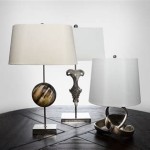Interior Designer Work: Transforming Spaces and Enhancing Lives
Interior designers are creative professionals who specialize in enhancing the functionality and aesthetics of interior spaces. They work closely with clients to understand their needs, preferences, and lifestyle, translating those desires into tangible designs. This article explores the multifaceted nature of interior designer work, encompassing the key aspects that define their role in shaping our surroundings.
Conceptualization and Planning
The foundation of an interior designer's work lies in understanding the client's vision and translating it into a cohesive design plan. This begins with a thorough consultation process, where the designer gathers information about the client's goals, budget, and preferences for the space. Through discussions, site visits, and careful analysis, the designer develops a comprehensive understanding of the project's unique requirements.
During the planning stage, the designer creates detailed drawings, sketches, and mood boards to illustrate the conceptual design. These visual representations serve as a blueprint for the project, outlining the layout, furniture placement, color schemes, materials, and lighting. The designer considers factors such as functionality, ergonomics, accessibility, and safety in ensuring that the space meets the client's needs and aligns with building codes and regulations.
Material Selection and Procurement
Interior designers play a crucial role in selecting and sourcing the materials that bring their designs to life. They research and evaluate a wide range of options, including finishes, fabrics, furniture, lighting fixtures, and decorative elements. Considerations include durability, aesthetics, cost, and environmental impact.
The designer collaborates with vendors and suppliers to secure the best materials and ensure timely delivery. They carefully manage the procurement process to guarantee that the materials meet the design specifications and adhere to quality standards. This meticulous attention to detail ensures that the finished space reflects the designer's vision and meets the client's expectations.
Project Management and Implementation
Beyond the creative aspects of design, interior designers possess strong project management skills. They oversee the entire project lifecycle, coordinating with contractors, subcontractors, and other professionals involved in the implementation process.
The designer ensures that the work is executed according to the design plan, schedule, and budget. They monitor progress, address any issues that arise, and make necessary adjustments to ensure the project stays on track. Their communication skills are vital in fostering effective collaboration and minimizing delays or conflicts.
Collaboration and Communication
Successful interior design involves collaboration with a diverse team of professionals. Designers work closely with architects, engineers, contractors, and other specialists to ensure that the design seamlessly integrates with the overall building structure and meets all relevant standards.
Effective communication is paramount in this collaborative process. Designers need to clearly convey their design vision, expectations, and instructions to all involved parties, ensuring that everyone is informed and working towards a shared goal. They also use their communication skills to manage client expectations and keep them informed throughout the project.
Sustainability and Inclusivity
The field of interior design is evolving to prioritize sustainability and inclusivity. Designers are incorporating environmentally friendly materials, reducing waste, and opting for energy-efficient solutions. They are also embracing universal design principles to create spaces that are accessible and welcoming to individuals of all abilities.
This commitment to sustainability and inclusivity reflects a growing awareness of the social and environmental impact of design decisions. Interior designers are playing a vital role in creating spaces that are not only aesthetically pleasing but also contribute to a healthier and more equitable world.

Careers In Interior Design The Ultimate Guide Nyiad

How To Become An Interior Designer Designteacher

How Do Interior Designers Work Our Miami Experts Are Weighing In

How To Work With An Interior Designer

How To Working With An Interior Designer Designcafe

How To Work With An Interior Design Firm Lita Dirks Co Award Winning

What Does An Interior Designer Do Careerexplorer

Interior Designer Job Description

The Ultimate Guide To Interior Design Feathr Wallpapers

What Is Interior Designer Know Skills Roles Salary Career Path Courses Jobs Eligibility Shiksha








